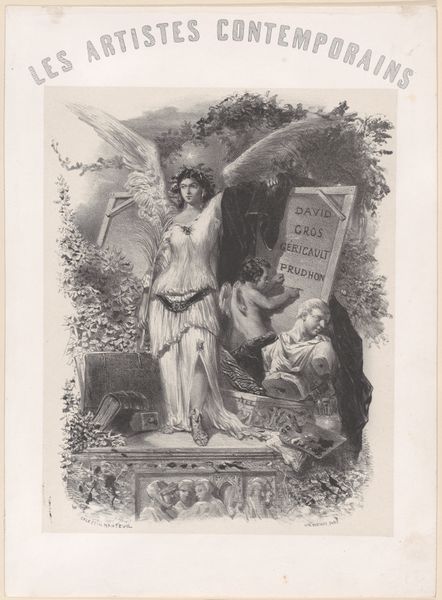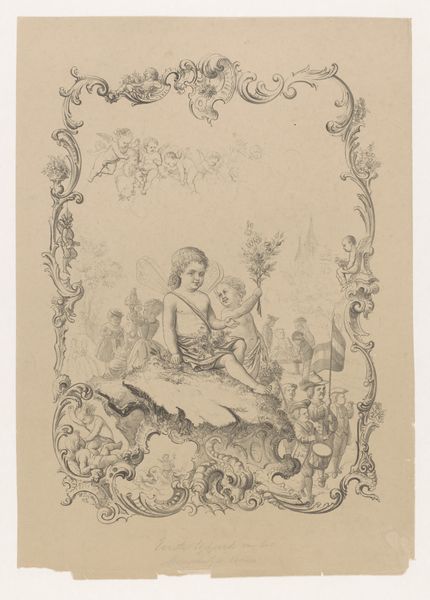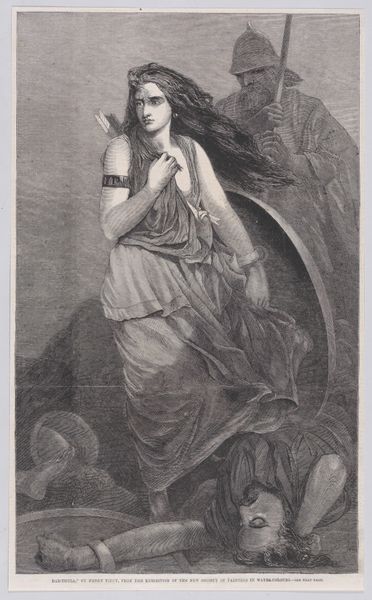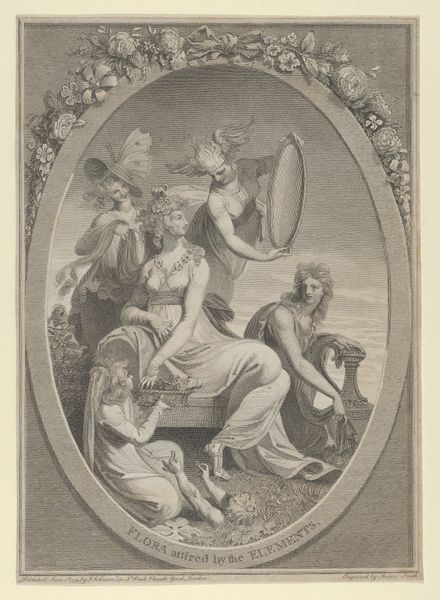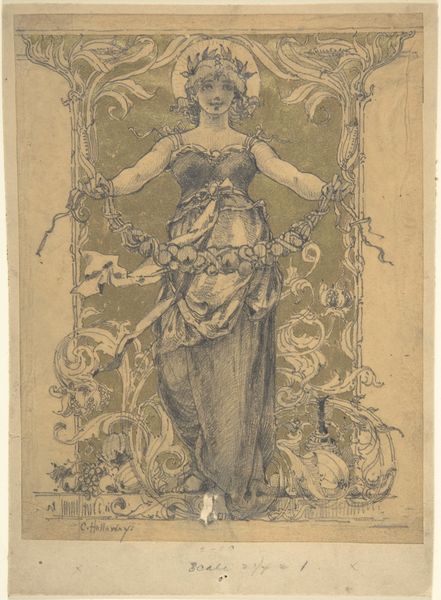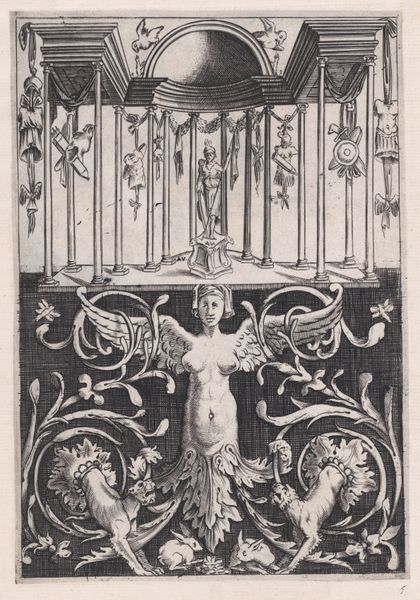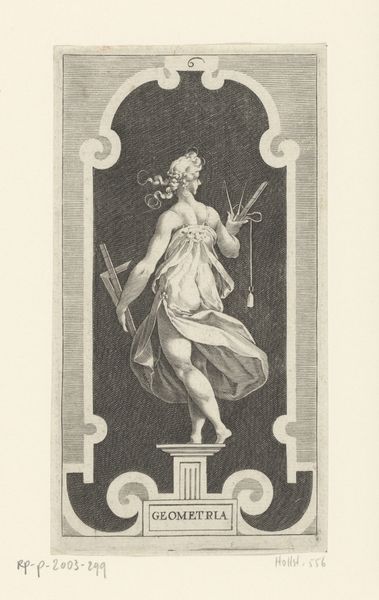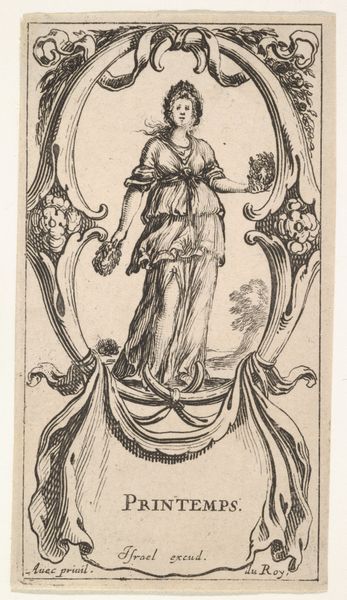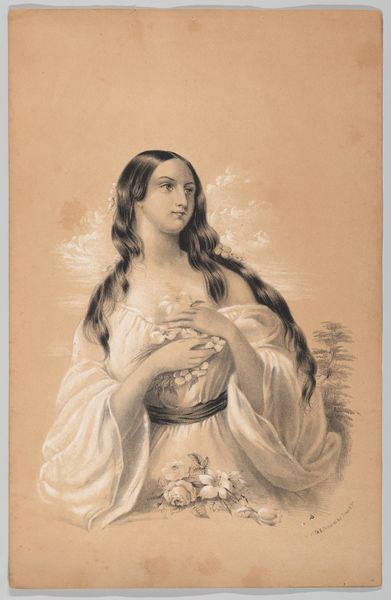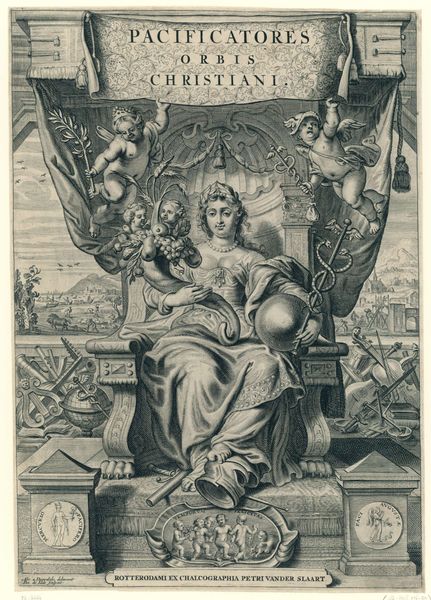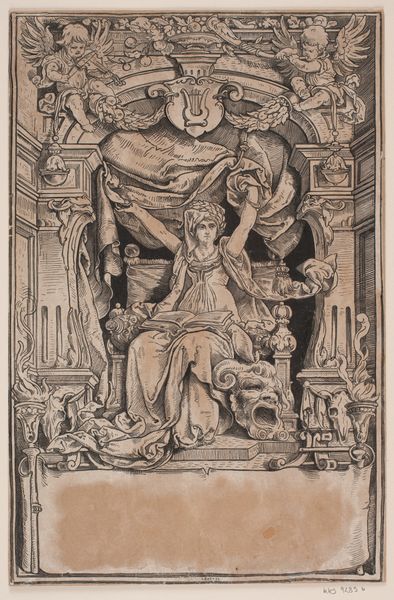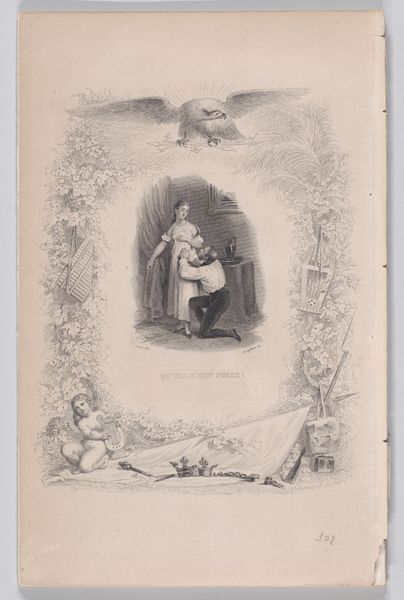
drawing, print
#
portrait
#
drawing
# print
#
figuration
#
romanticism
#
line
Dimensions: Sheet: 10 3/8 × 7 15/16 in. (26.4 × 20.2 cm)
Copyright: Public Domain
Editor: This is Célestin Nanteuil’s “Title Page for the Revue de Peintres,” created in 1835. It’s a print, so it must be a drawing that was then reproduced. I’m struck by how the central figure, presumably an allegory of painting, is both idealized and quite sensual. How do you interpret this work? Curator: That’s a great starting point. Consider the period – 1835. We're in the throes of Romanticism, yet seeing the rise of industrialization. What does it mean to idealize the artist in a rapidly changing society? This female figure is poised and serene, but what societal expectations and limitations were placed on women, particularly women artists, at this time? Editor: That's true. She's holding a palette, a symbol of her agency, yet her pose also feels somewhat… passive? Was this perhaps a comment on the limited roles available to women artists even within the supposedly progressive Romantic movement? Curator: Precisely! Notice how she is framed—almost literally, on a pedestal. Who gets to define what "art" is, and whose perspectives are privileged? The "Revue des Peintres," whose title appears at the bottom, would have been part of that discourse, setting aesthetic and cultural values, while either including or excluding marginalized voices. How does the gaze, here, function in establishing those cultural norms? Editor: I hadn’t considered it that way, but it's true. By idealizing her beauty, does it subtly undermine her authority as a creative force? Maybe it perpetuates a limited view of women’s roles in the arts. Curator: It could. Exploring how she is presented vis-à-vis the text itself is valuable to consider here. The decorative elements both elevate and enclose her, and could also hint at the commercial and patriarchal framework around artistic practice. Editor: So it is less about individual artistic expression and more about the social context shaping it. I learned a lot; thank you! Curator: Likewise. Thinking about art through these lenses allows us to appreciate not just the skill, but also the silent dialogues it holds with the world around it.
Comments
No comments
Be the first to comment and join the conversation on the ultimate creative platform.
